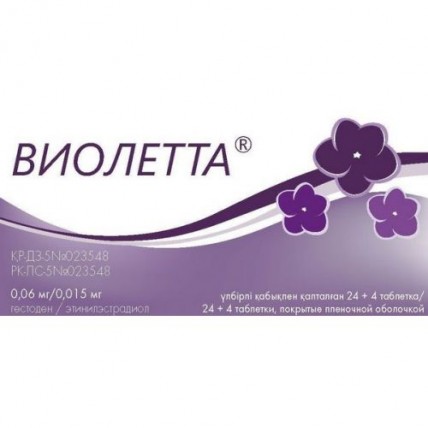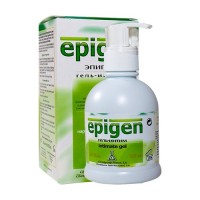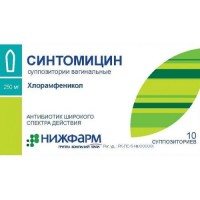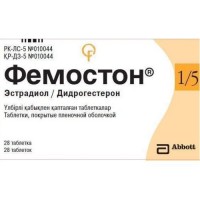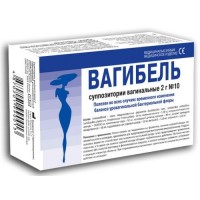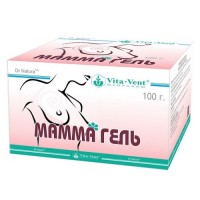Violet (Gestodene/Ethinylestradiol) 0.06 mg/0.015 mg, 28 (24 + 4) tabs
- $19.30
Out Of Stock
Sku:
5ad892630a8e
Brand:
Gedeon Richter (Hungary)
The instruction for medical use of VIOLETTA® medicine the Trade name of Violetta® the International unlicensed name Is not present the Dosage form of the Tablet, film coated, 0.06 mg / 0.015 mg Structure on one tablet of drug active agents: gestoden (micronized) 0.060 mg, the ethinylestradiol (micronized) 0.015 mg, excipients: lactoses monohydrate, cellulose microcrystalline (type 112), poliakrilin potassium, magnesium stearate, structure of a film cover: Opadray II yellow 31K32378: lactoses monohydrate, a gipromelloza (type 2910), the titan dioxide (E 171), triacetin, quinolinic yellow (E 104) Structure on one tablet of placebo excipients: cellulose microcrystalline, lactose anhydrous, starch corn prezhelatinizirovanny, magnesium stearate, silicon dioxide colloidal anhydrous, structure of a film cover: Opadray II green 85F21389: polyvinyl alcohol, the titan dioxide (E 171), a macrogoal 3350, talc, indigo carmine (E 132), quinolinic yellow (E 104), ferrous oxide black (E 172), yellow sunset (E 110) the Description of the Tablet of drug of the Tablet, film coated yellow color, round shape, with a biconvex surface, with an engraving of G43 on one party, smooth on the other hand. Tablet placebo tablets, film coated green color, round shape with a biconvex surface, with a diameter about 6 mm. Pharmacotherapeutic group Urinogenital system and sex hormones. Sex hormones and modulators of a reproductive system. Hormonal contraceptives for system use. Progestogens and estrogen. Gestoden and ethinylestradiol. ATX G03AA10 code Pharmacological Absorption Pharmacokinetics Gestoden properties: at intake gestoden it is quickly and completely soaked up. The absolute bioavailability is about 100%. After reception of a single dose of 60 mkg the maximum serumal concentration of 2 ng/ml is reached approximately in 1 hour. Concentration in plasma strongly depends on the GSPG level. At repeated use of a combination gestoden / ethinylestradiol its concentration in blood plasma increases by 2-4 times. Distribution and linking with proteins of blood plasma: the seeming volume of distribution is 1.4 l/kg after reception of a single dose of 60 mkg. 30% of a gestoden contact albumine of blood plasma, from 50 to 70% contact GSPG. Metabolism: gestoden it is completely metabolized. The metabolic clearance is about 0.8 ml/min. after single dose of 60 mkg. Inactive metabolites are removed by kidneys (60%) and through intestines (40%). Removal: the expected elimination half-life makes about 13 hours. Elimination half-life increases till 20 o'clock if gestoden it is used together with ethinylestradiol. Ethinylestradiol Absorption: after intake, ethinylestradiol is quickly and completely soaked up. After reception of 15 mkg the maximum concentration in blood plasma of 30 pg/ml is observed in the range of 1-1.5 hours. Ethinylestradiol is exposed to effect of the first passing through a liver, with big individual variability. The absolute bioavailability is about 45%. The equilibrium state is reached in the second half of treatment, accumulation of serumal concentration of ethinylestradiol with a factor from 1.4 to 2.1 is observed. Distribution and linking with proteins of blood plasma: the seeming volume of distribution of ethinylestradiol is 15 l/kg, and about 98% contact proteins of blood plasma. Ethinylestradiol induces synthesis of the globulin, connecting sex hormones (G,CSH), and kortikosteroidsvyazyvayushchy globulin (KSG) in a liver. In the course of treatment using 15 mkg of ethinylestradiol the concentration of GSPG in plasma increases from 86 to 200 nmol/l. Metabolism: ethinylestradiol is completely metabolized (the plasma clearance of metabolites is about 10 ml/min.). Metabolites are removed by kidneys (40%) and through intestines (60%). Removal: elimination half-life of ethinylestradiol makes about 15 hours. Only small part of ethinylestradiol is removed in not changed look. Metabolites of ethinylestradiol are brought out of an organism with urine and bile in the ratio 4/6. A pharmacodynamics the Monophase combined oral contraceptive. The Perlya index taking into account incorrect use: 0.24 (21521 cycles), 95% confidence interval 0.04-0.57. The contraceptive effect of the drug Violetta® is provided with three complementary mechanisms: - impact on a gipotalamo-hypophysial system by ovulation inhibition, - increase in viscosity of cervical slime does it rather impassable for spermatozoa, - impact on endometrium worsens conditions for implantation of fetal egg. Indications - oral hormonal contraception. Way of use and dose Inside. Preparation of a sticker For convenience of observance of the mode of administration of drug 7 stickers with the indication of 7 days of the week are attached to packing. The woman should choose a sticker where day of the beginning of administration of drug matches the first day of the week. For example, if administration of drug is begun on WEDNESDAY, then it is necessary to take the sticker beginning with Sr. It is necessary to combine a ð symbol on a sticker with the same symbol on planimetric packing and to attach a sticker in area, the limited black line. Then every day will match a cell of a tablet and it will be visible to the woman, she took a pill in specific day or not. The drug needs to be taken according to an arrow on packing, will not be taken all 28 pill yet. Within four days of reception of green tablets of placebo (days of intake of placebo) there is cancellation bleeding. Usually it occurs for 2 or 3 day after the end of reception of yellow active tablets of the drug Violetta®. Upon termination of reception of green tablets it is necessary to begin immediately reception of yellow tablets from the following packing irrespective of, bleeding of cancellation stopped or not. It means that administration of drug from each following packing begins in the same day of the week, and bleeding of cancellation has to begin in the same day of every month. At such mode of administration of drug Violetta® the woman is protected from pregnancy, including 4 days of reception of tablets of placebo. How to take the drug Violetta® of the Tablet accept in the order specified on packing, every day approximately at the same time, washing down with a small amount of water. Accept on 1 tablet a day within 28 days in a row (on 1 yellow tablet a day within 24 days, then on 1 green tablet of placebo a day the next 4 days) without interruption between packings. Bleeding of cancellation (menstrualnopodobny bleeding) usually begins in 2-3 days after reception of the last tablet containing active agent and can proceed prior to reception of tablets from new packing. How to begin administration of drug of Violetta®: In the absence of reception of any hormonal contraceptives last month. Reception of tablets should be begun from 1 day of a natural menstrual cycle (i.e. from the first day of menstrual bleeding). Upon transition from other hormonal contraceptive (the combined oral contraceptive (COOK), a vaginal ring or a transdermalny plaster) Administration of drug of Violetta® needs to be begun next day after reception of the last active tablet previous the COOK (the last tablet containing active agent), administration of drug of Violetta® should not begin after the next day after a usual break in reception of tablets or reception of inactive tablets previous the COOK. Upon transition from a vaginal ring or a transdermalny plaster it is desirable to begin administration of drug of Violetta® in day of removal of the previous means, but no later than day when the new ring has to be entered or the new plaster is pasted. Upon transition from other drugs containing only progestogen (mini-drank, injection forms, implants), or from the intrauterine system (Naval Forces) releasing levonorgestrel with mini-drank Transition is possible at any time. When using an implant or Naval Forces – in day of their removal. At use of injection forms – in day when the following injection has to be made. In these cases it is recommended to use an additional barrier method of contraception in the first 7 days of administration of drug of Violetta®. After abortion, including spontaneous, in the I trimester of pregnancy It is possible to begin administration of drug of Violetta® immediately. In this case use of additional contraceptive methods is not required. Use after the delivery or abortion in the II trimester of pregnancy Administration of drug of Violetta® should be begun between the 21 and 28 day after the delivery or termination of pregnancy in the II trimester. At the beginning of inclusion in later terms it is necessary to apply in addition barrier method of contraception during the first 7 days of administration of drug. In the presence of sexual contact prior to administration of drug it is necessary to exclude pregnancy before use the COOK or to wait for the first periods. Reception of the passed tablets Efficiency of Contraception can be reduced if the yellow pill was not taken, especially at the beginning of reception of new packing. If delay in reception of a tablet makes less than 12 hours, contraceptive protection does not decrease. The passed pill should be taken at once as soon as the woman remembers it, and the following pill should be taken in usual time. If delay in reception of a yellow tablet makes more than 12 hours, contraceptive protection can decrease. At the admission of the next administration of drug it is necessary to be guided by the following two basic rules: 1. It is impossible to stop reception of tablets more than for 7 days, 2. Achievement of sufficient suppression gipotalamo - a hypophysial and ovarian system requires 7 days of continuous administration of drug. According to the rules stated above, the following is recommended: Days 1-7 administrations of drug the Woman has to take the last passed pill as soon as possible as soon as she remembers even if it means reception of two tablets at the same time. The following pill is taken in usual time. In addition during the next 7 days it is necessary to apply a barrier method of contraception. If the sexual contact happened during the previous 7 days before the admission of a tablet, it is necessary to consider pregnancy approach probability. Than more tablets are passed and the this admission is closer to reception of tablets of placebo, the risk of approach of pregnancy is higher. Days 8-14 administrations of drug the Woman has to take the last passed pill at once as soon as she remembers it even if it means reception at the same time of two tablets. The following takes a pill in usual time. Provided that the woman correctly took a pill within 7 days preceding the admission of the first tablet there is no need to use additional methods of contraception. If the woman passed more than 1 tablet, during the next 7 days it is necessary to use additional methods of contraception. Days 15-24 administrations of drug the Risk of decrease in contraceptive efficiency increases at approach of the period of reception of tablets of placebo. However at observance of the scheme of reception it is possible to avoid decrease in contraceptive protection. If to adhere to one of the following options, then there is no need to use additional measures of contraception on condition of the correct reception of tablets for 7 days to the admission of the first tablet. If it not so, is recommended to adhere to the first of the following options and to use additional methods of contraception during the next 7 days. 1. The woman has to take the last passed pill as soon as possible as soon as she remembers even if it means reception of two tablets at the same time. The following takes a pill in usual time until tablets with active agent end. All 4 pill of placebo of the last row are not taken. Reception of tablets from new packing has to be begun without interruption as soon as the current packing ends. It is probable that the woman will have no bleeding of cancellation until the end of the second packing, but the smearing bloody discharges or breakthrough bleeding in days of administration of drug from the second packing can be observed. 2. It is also possible to stop reception of tablets from the current packing. In this case it is necessary to accept on 1 tablet of placebo of the last row within 4 days, including days of the admission, then to begin reception of tablets from new packing. If the woman missed reception of tablets and in the period of intake of placebo of tablets she has no bleeding of cancellation, it is necessary to exclude pregnancy. Use of drug in gastrointestinal disorder If the woman had a vomiting or diarrhea, absorption can be incomplete therefore additional measures of contraception have to be taken. If vomiting arose within 3-4 hours after administration of drug, it is necessary to take an additional pill as soon as possible, but no later than 12 hours for usual time of reception. If there passed more than 12 hours, it is necessary to be guided by recommendations at the admission of a tablet (see. Reception of the passed tablets above). If the woman does not want to change the usual schedule of administration of drug, she has to take an additional pill from other packing. How to delay bleeding of cancellation If the woman wants to delay day of the beginning of menstrual bleeding, it has to begin administration of drug of Violetta® from the following packing, having missed reception of tablets of placebo. To continue administration of drug from new packing perhaps so long as the woman wishes (up to the termination of active tablets in packing). During this period there can be breakthrough bleedings or the smearing discharges. After reception of tablets of placebo the woman has to resume regular administration of drug of Violetta®. For postponement of day of the beginning of menstrualnopodobny bleeding the next day weeks it is necessary to reduce the period of intake of placebo of tablets by so many days on how many it is necessary. The this interval is shorter, the risk of absence of bleeding of cancellation and appearance of breakthrough bleedings and the smearing discharges is higher during reception of the second packing (as well as in case of transfer of the beginning of bleeding of cancellation). Special groups of patients Children and teenagers the Drug Violetta® is shown only after approach of menarche. There are no data on need of change of a dose. Elderly patients the Drug Violetta® is not shown after approach of a menopause. An abnormal liver function the Drug Violetta® is contraindicated to women with a liver failure (see sections of Contraindication and Pharmacokinetics). A renal failure the Drug Violetta® is contraindicated to women with a heavy renal failure or an acute renal failure. Side effects For classification of frequency of undesirable effects the following terminology is used (according to MedDRA): very often (≥1/10), it is frequent (from ≥1/100 to & lt, 1/10), infrequently (from ≥1/1000 to & lt, 1/100), is rare (from ≥1/10000 to & lt, 1/1000), is very rare (& lt, 1/10000), frequency is unknown (on the basis of the available data assessment of frequency is impossible). Often (from ≥1/100 to & lt, 1/10) a vaginitis, including vaginal candidiasis, differences of mood, including a depression, disturbance a libido, concern, dizziness, a headache, nausea, vomiting, an abdominal pain, an acne, mammary gland pain, morbidity of mammary glands, a galactorrhoea, a dysmenorrhea, discharges from a vagina, disturbances of a menstrual cycle, ectropion, a delay liquids/hypostases, increase/degrowth of a body. Infrequently (from ≥1/1000 to & lt, 1/100) decrease or increase in appetite, a dislipidemiya (including a gipertriglitseridemiya), arterial hypertension, migraine, spasms, an abdominal distension, rash, a hloazm (melazm) with persistention probability, a hirsutism, an alopecia. Seldom (from ≥1/10000 to & lt, 1/1000). anaphylactic/anaphylactoid reactions, urticaria, a Quincke's edema, collapse, respiratory insufficiency, disturbance of tolerance to glucose, intolerance of contact lenses, a venous/arterial thrombembolia, cholestatic jaundice, a knotty erythema, a multiformny erythema. Very seldom (& lt, 1/10000) benign tumors of a liver and a hepatocellular carcinoma, deterioration in a course of a system lupus erythematosus, deterioration in a course of a porphyria, deterioration in a course of a chorea, an optic neuritis, thrombosis of vessels of a retina, pancreatitis, cholelithiasis, a cholestasia (the COOK can worsen a course of cholelithiasis and aggravate a cholestasia), a gemolitiko-uraemic syndrome. Contraindications the Combined Hormonal Contraceptives (CHC) should not be applied in following
luchayakh. If any of these states / diseases develop for the first time against the background of reception, drug has to be immediately cancelled: - hypersensitivity to active agents or to any of excipients. - presence of risk of a venous thrombembolia (VTE): o existence of VTE now (against the background of anticoagulants) or in the anamnesis (for example, a deep vein thrombosis or a pulmonary embolism), o the established burdened heredity or the acquired predisposition to VTE, for example, resistance to the activated protein With (including the V Leiden factor), insufficiency of antithrombin III, insufficiency of a protein With or a protein of S, o extensive surgeries with a long immobilization, o high risk of VTE because of numerous risk factors. presence of risk of developing arterial thrombembolia (ATE): o existence of ATE now or in the anamnesis (for example, a myocardial infarction) or the states preceding it (for example, stenocardia), o disturbance of cerebral circulation – presence of a stroke now or in the anamnesis or the states preceding it (for example, the tranzitorny ischemic attack), o the established burdened heredity or the acquired predisposition to ATE, for example, a gipergomotsisteinemiya and antibodies to phospholipids (anti-cardiolipin antibodies, lupoid anticoagulant), o existence in the anamnesis of migraine with focal neurologic symptomatology, o high risk of development of ATE because of numerous risk factors or presence of one serious risk factor from following: § diabetes with vascular complications, § arterial hypertension, § a dislipoproteinemiya, - existence of a malignant new growth of mammary glands and suspicion on it, - a carcinoma of a mammary gland or endometrium, or presence of any other estrogenzavisimy tumor, - benign or malignant tumors of a liver, a serious illness of a liver before normalization of indicators of function of a liver, - jaundice or a persistent itching during the previous pregnancy, Dabin-Johnson's syndrome, the Rotor syndrome now or in the anamnesis, - a sickemia, - herpes of pregnant women in the anamnesis, - deterioration in an otosclerosis during pregnancy, - chronic kidney disease or an acute renal failure, - bleeding from a vagina of not clear etiology, - pancreatitis with the expressed gipertriglitseridemiya now or in the anamnesis, - pregnancy and suspicion on it, - the breastfeeding period, - hereditary intolerance of a galactose, a lactose intolerance or a sprue of glucose and a galactose, - age up to 18 years. Medicinal interactions For an exception of possible interactions it is necessary to study instructions of the drugs used together with the drug Violetta®. Influence of other medicines on effect of the drug Violetta® Is possible interaction with the medicines inducing microsomal enzymes therefore the clearance of sex hormones can increase that, in turn, will lead to breakthrough bleeding and/or decrease in contraceptive effect. Measures for risk reduction Induction of enzymes can be observed in several days after the beginning of administration of drug. The maximum induction of enzymes is usually observed within several weeks. After drug withdrawal the induction of enzymes can remain up to 4 weeks. Short-term treatment to Women who receive treatment by drugs inductors of microsomal enzymes in addition to the COOK is recommended to use a barrier method of contraception temporarily. The barrier method of contraception should be used during the entire period of the accompanying therapy and within 28 days after its cancellation. If use of drug inductor continues after reception of the last active tablet of drug from the current packing, then it is necessary to begin reception of tablets from new packing, having missed reception of tablets of placebo. Long-term treatment to the Women receiving long therapy by the drugs inducing the fermental system of a liver is reasonable to consider the possibility of use of a reliable non-hormonal method of contraception. The substances leading to increase in clearance the COOK (decrease in efficiency the COOK due to induction of microsomal enzymes) Barbiturates, bozentan, carbamazepine, Phenytoinum, Primidonum, rifampicin and drugs for treatment of HIV: ritonavir, not Virapinum and efavirenz and it is possible also felbamat, griseofulvin okskarbazepin, topiramat and the drugs containing a St. John's wort made a hole (Hypericum perforatum). There is a risk of decrease in efficiency of contraception during treatment modafinily and during one cycle after its cancellation. The substances rendering various effects on clearance the COOK At co-administration with the COOK many combinations of inhibitors of HIV protease and nenukleozidny inhibitors of reverse transcriptase, including a combination with hepatitis C virus protease inhibitors can increase or reduce concentration of estrogen or progestogen in blood plasma. The aggregate effect of these changes can be in certain cases clinically significant. For identification of possible medicinal interactions and the recommendations connected with it it is necessary to consider information provided in iinstruktion on medical use of the accompanying drugs intended for treatment of HIV infection / hepatitis C. The women receiving inhibitors of protease or nenukleozidny inhibitors of reverse transcriptase need to use an additional barrier method of contraception. The substances leading to decrease in clearance the COOK (inhibitors of microsomal enzymes) the Clinical importance of possible interactions it is unknown. Simultaneous use with powerful CYP3A4 inhibitors can lead to increase in concentration and estrogen, and progestogen in blood plasma. At simultaneous use of an etorikoksib in doses of 60 mg and 120 mg a day together with combined by the hormonal contraceptives containing 0.035 mg of ethinylestradiol increase in concentration of ethinylestradiol in plasma in 1.4 and 1.6 times respectively was observed. Influence of the drug Violetta® on effect of other COOK medicines can influence metabolism of certain active agents. Besides, their concentration in plasma and fabrics – how to raise (for example, cyclosporine), and to decrease can change (for example, lamotrigin). It is revealed that ethinylestradiol suppresses clearance of substrates of an isoenzyme of CYP1A2, leading to small (for example, theophylline) or moderated (for example, tizanidin) to increase in their concentration in blood plasma. The laboratory researches Intake of Contraceptive Hormones can affect results of separate laboratory tests, including biochemical indicators of function of a liver, thyroid gland, adrenal glands and kidneys and also amount of transport proteins in blood plasma (such as kortikosteroidsvyazyvayushchy globulin and lipido/lipoprotein fractions), indicators of carbohydrate metabolism, fibrillation. Changes usually do not go beyond normal values of laboratory indicators. Special instructions in the presence of any of the states / diseases / risk factors provided below it is necessary to estimate carefully potential risk and the expected advantage of use of the drug Violetta® in each individual case now. Disturbances from blood circulation Risk of developing of a venous thrombembolia (VTE) Use the COOK increases risk of VTE. The drugs containing levonorgestrel norgestimat or Norethisteronum, are associated with the smallest risk of VTE. Other drugs, such as Violetta®, have twice higher risk. The decision on use of the drug which is not entering the list with the smallest risk of VTE should be accepted only after the conversation with the woman. It is necessary to be convinced that she understands the size of risk of VTE at administration of drug of Violetta® what impact on it the risk factors which are available for it have, and the fact that the greatest risk of development of VTE is noted in the first year of use of drug. Besides, there are data according to which the risk increases when resuming reception the COOK after a break within 4 weeks and more. In a year VTE develops approximately at 2 of 10000 non-pregnant and not accepting the COOK women. However individual risk of development of VTE at the woman can be much higher taking into account the risk factors which are available for it. Within a year at 9-12 of 10000 women accepting the COOK with gestodeny VTE develops (in comparison approximately with 6 women accepting the COOK, containing levonorgestrel). In both cases the quantity of VTE in a year is smaller, than the quantity expected during pregnancy or the postnatal period. VTE can end with a lethal outcome in 1-2% of cases. Extremely seldom at reception of the combined hormonal contraceptives fibrinferments of other arteries and veins, for example, hepatic, mezenterialny, renal and also retina vessels were observed. Risk factors of development of VTE Risk of development of venous tromboembolic episodes at use the COOK can raise considerably at women with accessory factors of risk, in particular, with multiple factors of risk (see the table). The drug Violetta® is contraindicated to women with multiple factors of risk which cause getting of the patient into group of high risk of developing venous thrombosis (see the section Contraindications). In the presence at the woman more than one risk factor can develop a situation at which the risk increases more than at simple summation of individual factors. In that case it is necessary to consider the general risk of development of VTE. If the ratio risk advantage is adverse, it is necessary to refuse appointment the COOK (see the section Contraindications). Table: Risk factors of development of VTE Risk factor the Note Obesity (BMI exceeds 30 kg/sq.m) With increase in BMI the risk increases considerably. It is very important to consider presence also of other risk factors. The long immobilization (including air flights lasting over 4 hours), extensive surgery, any surgeries in legs or a basin, neurosurgical operations or extensive injuries In such situations is recommended to stop administration of drug of Violetta® (in case of planned surgery – not less than in four weeks) and not to renew it before the expiration of two weeks after complete recovery of physical activity. To avoid unwanted pregnancy, resort to other method of contraception. In case administration of drug of Violetta® was not stopped in advance, consider the possibility of performing antitrombotichesky therapy. The burdened family anamnesis (cases of a venous thrombembolia at the immediate family – the brother, the sister, parents, it is especially relative at young age, i.e. up to 50 years) If arises suspicion on genetic predisposition, the woman has to be directed to consultation to the expert before making decision on use of any the COOK. Any pathologies associated with VTE Cancer, a system lupus erythematosus, a gemolitiko-uraemic syndrome, chronic inflammatory bowel disease (Crohn's disease or ulcer colitis) and a sickemia. The age Especially after 35 years Is not present a consensus about a possible role of a varicosity and thrombophlebitis of superficial veins in development or progressing of a vein thrombosis. It is necessary to consider the increased risk of developing a thrombembolia during pregnancy and especially in the first 6 weeks of a puerperal period. VTE symptoms (deep vein thrombosis and a pulmonary embolism) of the Woman have to be informed that in case of symptoms they should ask for emergency medical service and to report to the health worker about use the COOK. Symptoms of the deep vein thrombosis (DVT) can include: - unilateral hypostasis of the lower extremity or only foot, or swelled along a vein of the lower extremity, - pain or morbidity in a leg which is felt only in a standing position or during walking, - temperature increase of skin of the affected lower extremity, reddening or discoloration of skin of the lower extremity. Symptoms of a pulmonary embolism (TELA) can include: - suddenly begun causeless short wind or frequent breath, - sudden cough without the obvious reason, can be a pneumorrhagia, - an acute pain in a breast, - the significant faintness or dizziness, - frequent or spasmodic heartbeat. Some of the given symptoms (for example, short wind, cough) are not specific and can be mistakenly taken for more widespread or less serious illness (for example, infectious diseases of airways). Other signs of disturbance of passability of vessels can include sudden pain, hypostasis and slight cyanosis of an extremity. At development of thrombosis of vessels of an eye the symptoms can vary from illegibility of sight (without pain) before the progressing loss of sight. In some cases loss of sight can develop practically at once. Risk of developing an arterial thrombembolia (ATE) Results of epidemiological researches allowed to connect use the COOK with the increased risk of developing an arterial thrombembolia (myocardial infarction) or disturbance of cerebral circulation (for example, the tranzitorny ischemic attack, a stroke). Cases of an arterial thrombembolia can lead to a lethal outcome. Risk factors of development of ATE Risk of development of arterial tromboembolic episodes or disturbances of cerebral circulation at use the COOK increases at women with risk factors (see the table). The drug Violetta® is contraindicated to women with one serious risk factor or multiple factors of risk of development of ATE which cause getting of the patient into group of high risk of developing arterial thrombosis (see the section Contraindications). In the presence at wives
to Develop
luchayakh. If any of these states / diseases develop for the first time against the background of reception, drug has to be immediately cancelled: - hypersensitivity to active agents or to any of excipients. - presence of risk of a venous thrombembolia (VTE): o existence of VTE now (against the background of anticoagulants) or in the anamnesis (for example, a deep vein thrombosis or a pulmonary embolism), o the established burdened heredity or the acquired predisposition to VTE, for example, resistance to the activated protein With (including the V Leiden factor), insufficiency of antithrombin III, insufficiency of a protein With or a protein of S, o extensive surgeries with a long immobilization, o high risk of VTE because of numerous risk factors. presence of risk of developing arterial thrombembolia (ATE): o existence of ATE now or in the anamnesis (for example, a myocardial infarction) or the states preceding it (for example, stenocardia), o disturbance of cerebral circulation – presence of a stroke now or in the anamnesis or the states preceding it (for example, the tranzitorny ischemic attack), o the established burdened heredity or the acquired predisposition to ATE, for example, a gipergomotsisteinemiya and antibodies to phospholipids (anti-cardiolipin antibodies, lupoid anticoagulant), o existence in the anamnesis of migraine with focal neurologic symptomatology, o high risk of development of ATE because of numerous risk factors or presence of one serious risk factor from following: § diabetes with vascular complications, § arterial hypertension, § a dislipoproteinemiya, - existence of a malignant new growth of mammary glands and suspicion on it, - a carcinoma of a mammary gland or endometrium, or presence of any other estrogenzavisimy tumor, - benign or malignant tumors of a liver, a serious illness of a liver before normalization of indicators of function of a liver, - jaundice or a persistent itching during the previous pregnancy, Dabin-Johnson's syndrome, the Rotor syndrome now or in the anamnesis, - a sickemia, - herpes of pregnant women in the anamnesis, - deterioration in an otosclerosis during pregnancy, - chronic kidney disease or an acute renal failure, - bleeding from a vagina of not clear etiology, - pancreatitis with the expressed gipertriglitseridemiya now or in the anamnesis, - pregnancy and suspicion on it, - the breastfeeding period, - hereditary intolerance of a galactose, a lactose intolerance or a sprue of glucose and a galactose, - age up to 18 years. Medicinal interactions For an exception of possible interactions it is necessary to study instructions of the drugs used together with the drug Violetta®. Influence of other medicines on effect of the drug Violetta® Is possible interaction with the medicines inducing microsomal enzymes therefore the clearance of sex hormones can increase that, in turn, will lead to breakthrough bleeding and/or decrease in contraceptive effect. Measures for risk reduction Induction of enzymes can be observed in several days after the beginning of administration of drug. The maximum induction of enzymes is usually observed within several weeks. After drug withdrawal the induction of enzymes can remain up to 4 weeks. Short-term treatment to Women who receive treatment by drugs inductors of microsomal enzymes in addition to the COOK is recommended to use a barrier method of contraception temporarily. The barrier method of contraception should be used during the entire period of the accompanying therapy and within 28 days after its cancellation. If use of drug inductor continues after reception of the last active tablet of drug from the current packing, then it is necessary to begin reception of tablets from new packing, having missed reception of tablets of placebo. Long-term treatment to the Women receiving long therapy by the drugs inducing the fermental system of a liver is reasonable to consider the possibility of use of a reliable non-hormonal method of contraception. The substances leading to increase in clearance the COOK (decrease in efficiency the COOK due to induction of microsomal enzymes) Barbiturates, bozentan, carbamazepine, Phenytoinum, Primidonum, rifampicin and drugs for treatment of HIV: ritonavir, not Virapinum and efavirenz and it is possible also felbamat, griseofulvin okskarbazepin, topiramat and the drugs containing a St. John's wort made a hole (Hypericum perforatum). There is a risk of decrease in efficiency of contraception during treatment modafinily and during one cycle after its cancellation. The substances rendering various effects on clearance the COOK At co-administration with the COOK many combinations of inhibitors of HIV protease and nenukleozidny inhibitors of reverse transcriptase, including a combination with hepatitis C virus protease inhibitors can increase or reduce concentration of estrogen or progestogen in blood plasma. The aggregate effect of these changes can be in certain cases clinically significant. For identification of possible medicinal interactions and the recommendations connected with it it is necessary to consider information provided in iinstruktion on medical use of the accompanying drugs intended for treatment of HIV infection / hepatitis C. The women receiving inhibitors of protease or nenukleozidny inhibitors of reverse transcriptase need to use an additional barrier method of contraception. The substances leading to decrease in clearance the COOK (inhibitors of microsomal enzymes) the Clinical importance of possible interactions it is unknown. Simultaneous use with powerful CYP3A4 inhibitors can lead to increase in concentration and estrogen, and progestogen in blood plasma. At simultaneous use of an etorikoksib in doses of 60 mg and 120 mg a day together with combined by the hormonal contraceptives containing 0.035 mg of ethinylestradiol increase in concentration of ethinylestradiol in plasma in 1.4 and 1.6 times respectively was observed. Influence of the drug Violetta® on effect of other COOK medicines can influence metabolism of certain active agents. Besides, their concentration in plasma and fabrics – how to raise (for example, cyclosporine), and to decrease can change (for example, lamotrigin). It is revealed that ethinylestradiol suppresses clearance of substrates of an isoenzyme of CYP1A2, leading to small (for example, theophylline) or moderated (for example, tizanidin) to increase in their concentration in blood plasma. The laboratory researches Intake of Contraceptive Hormones can affect results of separate laboratory tests, including biochemical indicators of function of a liver, thyroid gland, adrenal glands and kidneys and also amount of transport proteins in blood plasma (such as kortikosteroidsvyazyvayushchy globulin and lipido/lipoprotein fractions), indicators of carbohydrate metabolism, fibrillation. Changes usually do not go beyond normal values of laboratory indicators. Special instructions in the presence of any of the states / diseases / risk factors provided below it is necessary to estimate carefully potential risk and the expected advantage of use of the drug Violetta® in each individual case now. Disturbances from blood circulation Risk of developing of a venous thrombembolia (VTE) Use the COOK increases risk of VTE. The drugs containing levonorgestrel norgestimat or Norethisteronum, are associated with the smallest risk of VTE. Other drugs, such as Violetta®, have twice higher risk. The decision on use of the drug which is not entering the list with the smallest risk of VTE should be accepted only after the conversation with the woman. It is necessary to be convinced that she understands the size of risk of VTE at administration of drug of Violetta® what impact on it the risk factors which are available for it have, and the fact that the greatest risk of development of VTE is noted in the first year of use of drug. Besides, there are data according to which the risk increases when resuming reception the COOK after a break within 4 weeks and more. In a year VTE develops approximately at 2 of 10000 non-pregnant and not accepting the COOK women. However individual risk of development of VTE at the woman can be much higher taking into account the risk factors which are available for it. Within a year at 9-12 of 10000 women accepting the COOK with gestodeny VTE develops (in comparison approximately with 6 women accepting the COOK, containing levonorgestrel). In both cases the quantity of VTE in a year is smaller, than the quantity expected during pregnancy or the postnatal period. VTE can end with a lethal outcome in 1-2% of cases. Extremely seldom at reception of the combined hormonal contraceptives fibrinferments of other arteries and veins, for example, hepatic, mezenterialny, renal and also retina vessels were observed. Risk factors of development of VTE Risk of development of venous tromboembolic episodes at use the COOK can raise considerably at women with accessory factors of risk, in particular, with multiple factors of risk (see the table). The drug Violetta® is contraindicated to women with multiple factors of risk which cause getting of the patient into group of high risk of developing venous thrombosis (see the section Contraindications). In the presence at the woman more than one risk factor can develop a situation at which the risk increases more than at simple summation of individual factors. In that case it is necessary to consider the general risk of development of VTE. If the ratio risk advantage is adverse, it is necessary to refuse appointment the COOK (see the section Contraindications). Table: Risk factors of development of VTE Risk factor the Note Obesity (BMI exceeds 30 kg/sq.m) With increase in BMI the risk increases considerably. It is very important to consider presence also of other risk factors. The long immobilization (including air flights lasting over 4 hours), extensive surgery, any surgeries in legs or a basin, neurosurgical operations or extensive injuries In such situations is recommended to stop administration of drug of Violetta® (in case of planned surgery – not less than in four weeks) and not to renew it before the expiration of two weeks after complete recovery of physical activity. To avoid unwanted pregnancy, resort to other method of contraception. In case administration of drug of Violetta® was not stopped in advance, consider the possibility of performing antitrombotichesky therapy. The burdened family anamnesis (cases of a venous thrombembolia at the immediate family – the brother, the sister, parents, it is especially relative at young age, i.e. up to 50 years) If arises suspicion on genetic predisposition, the woman has to be directed to consultation to the expert before making decision on use of any the COOK. Any pathologies associated with VTE Cancer, a system lupus erythematosus, a gemolitiko-uraemic syndrome, chronic inflammatory bowel disease (Crohn's disease or ulcer colitis) and a sickemia. The age Especially after 35 years Is not present a consensus about a possible role of a varicosity and thrombophlebitis of superficial veins in development or progressing of a vein thrombosis. It is necessary to consider the increased risk of developing a thrombembolia during pregnancy and especially in the first 6 weeks of a puerperal period. VTE symptoms (deep vein thrombosis and a pulmonary embolism) of the Woman have to be informed that in case of symptoms they should ask for emergency medical service and to report to the health worker about use the COOK. Symptoms of the deep vein thrombosis (DVT) can include: - unilateral hypostasis of the lower extremity or only foot, or swelled along a vein of the lower extremity, - pain or morbidity in a leg which is felt only in a standing position or during walking, - temperature increase of skin of the affected lower extremity, reddening or discoloration of skin of the lower extremity. Symptoms of a pulmonary embolism (TELA) can include: - suddenly begun causeless short wind or frequent breath, - sudden cough without the obvious reason, can be a pneumorrhagia, - an acute pain in a breast, - the significant faintness or dizziness, - frequent or spasmodic heartbeat. Some of the given symptoms (for example, short wind, cough) are not specific and can be mistakenly taken for more widespread or less serious illness (for example, infectious diseases of airways). Other signs of disturbance of passability of vessels can include sudden pain, hypostasis and slight cyanosis of an extremity. At development of thrombosis of vessels of an eye the symptoms can vary from illegibility of sight (without pain) before the progressing loss of sight. In some cases loss of sight can develop practically at once. Risk of developing an arterial thrombembolia (ATE) Results of epidemiological researches allowed to connect use the COOK with the increased risk of developing an arterial thrombembolia (myocardial infarction) or disturbance of cerebral circulation (for example, the tranzitorny ischemic attack, a stroke). Cases of an arterial thrombembolia can lead to a lethal outcome. Risk factors of development of ATE Risk of development of arterial tromboembolic episodes or disturbances of cerebral circulation at use the COOK increases at women with risk factors (see the table). The drug Violetta® is contraindicated to women with one serious risk factor or multiple factors of risk of development of ATE which cause getting of the patient into group of high risk of developing arterial thrombosis (see the section Contraindications). In the presence at wives
to Develop
